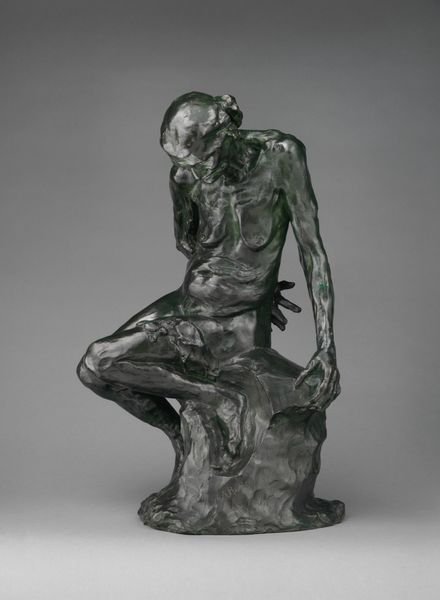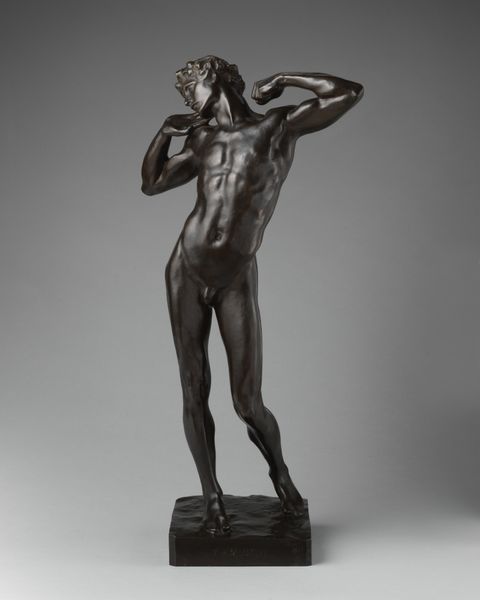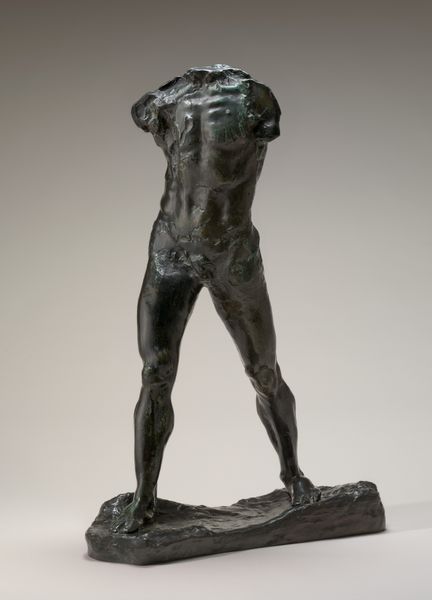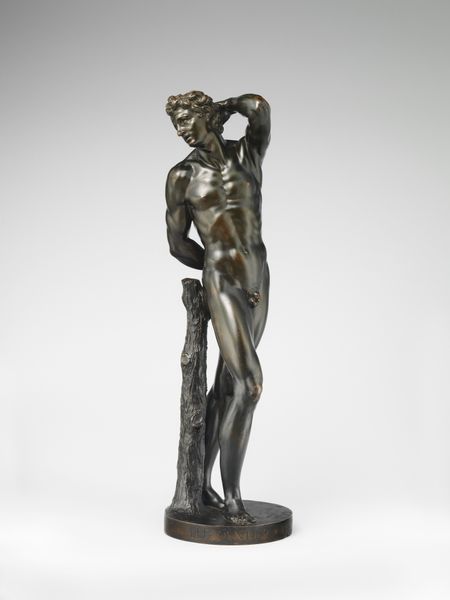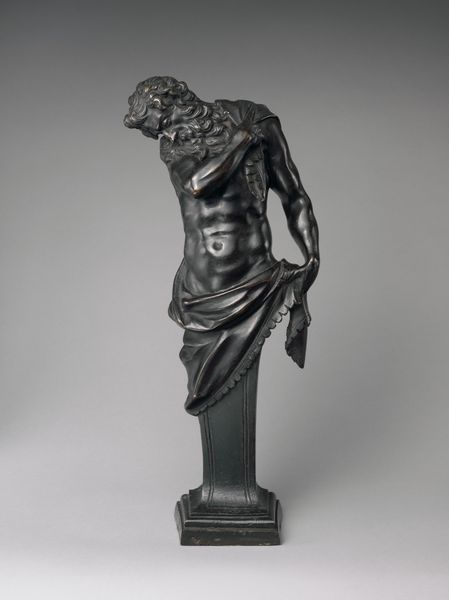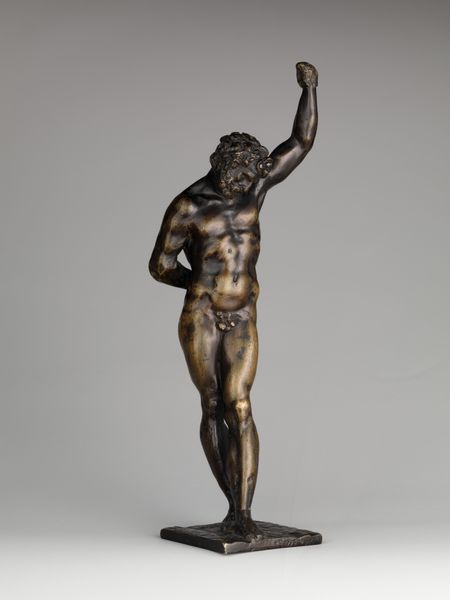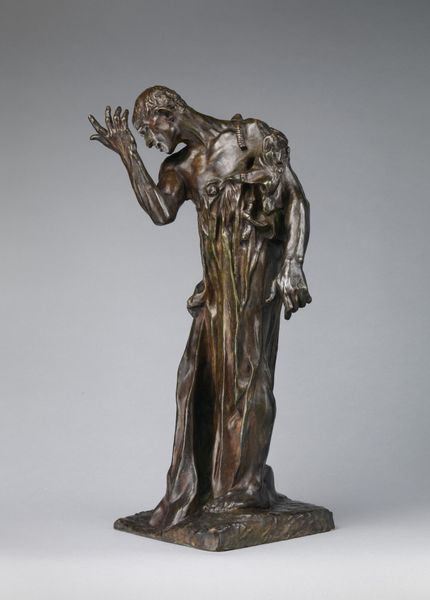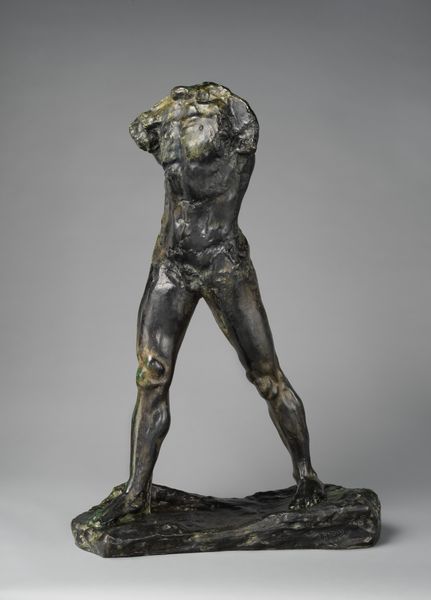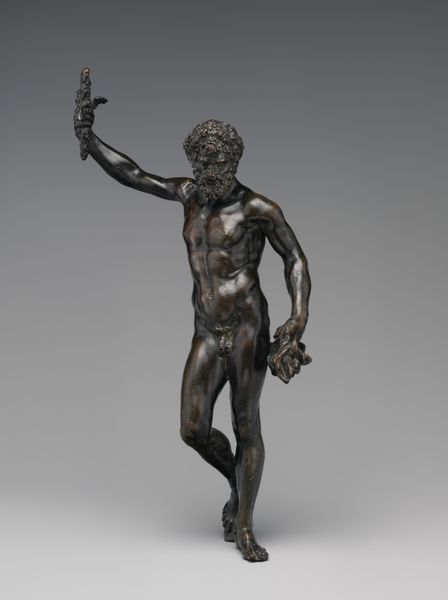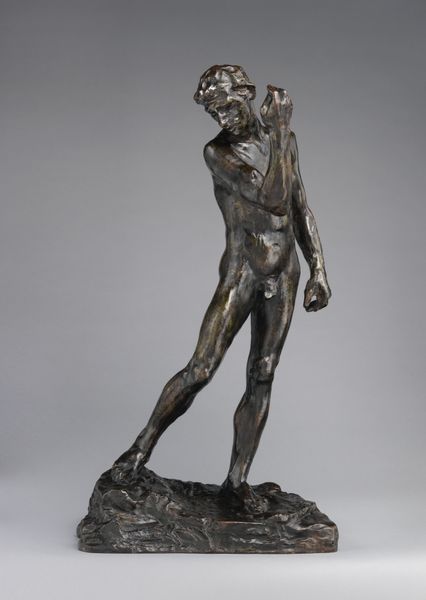
Dimensions: Overall (confirmed): 76 3/8 × 30 3/8 × 32 1/2 in., 831 lb. (194 × 77.2 × 82.6 cm, 376.9 kg)
Copyright: Public Domain
Curator: Before us stands "Adam," a bronze sculpture conceived by Auguste Rodin sometime between 1880 and 1910. It currently resides here at the Metropolitan Museum of Art. Editor: He looks heavy, burdened, as if carrying the weight of something immense. See how he almost shrinks into himself, his head bowed low? The pose alone speaks volumes about internal struggle, perhaps even regret. Curator: Precisely. Note how Rodin utilizes the bronze, exploiting its texture to capture not an idealized physique, but a profound sense of inner torment. Semiotically, the downward gaze, the tensed muscles—these all operate as signifiers of anguish and the dawn of consciousness. Editor: Right, it’s not just decorative, but a tangible manifestation of humanity grappling with self-awareness. Did you know the original idea came from a larger commission for “The Gates of Hell?” Imagining it in that context adds another layer of dread! Curator: It is quite valid to assert that such origins inevitably imbue this sculpture with symbolic heft, casting it less as a purely aesthetic venture than an object of philosophical reflection, evoking humanity’s fraught genesis. Editor: The rough texture amplifies it all. The uneven surface almost feels like the very earth is clinging to him. He’s raw, untamed… it reminds me of early mornings after terrible life choices! Heheh. Curator: Yes, there is a marked turn away from Academic standards of the nude form; he becomes an allegory of interior turmoil; and even the subtle muscular tension reflects the Modernist turn. It is an enduring depiction of the existential bind, and his placement within that context is paramount. Editor: Absolutely! Gazing at “Adam,” I’m overcome with thoughts on knowledge, responsibility, choice – themes deeply woven into our very essence. And maybe a slight aversion to apples! Curator: Agreed, its impact persists, inviting introspection across centuries. Editor: This discussion only heightens my admiration of Rodin and this complex sculpture, leaving so much to contemplate.
Comments
No comments
Be the first to comment and join the conversation on the ultimate creative platform.
